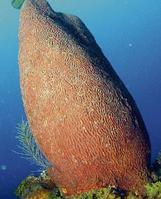Dr. Winklet Gallimore, Contributor

A coral in the ocean in Port Antonio. - FILE
THE DIVERSITY of the ocean with its vast array of colourful organisms presents an exciting opportunity to fish for things more tantalising than the palatable lobster or a treasure chest full of gold abandoned by pirates who conquered the seas. Here is our chance to open Mother Nature's treasure chest of anti-cancer, insecticidal, anti-fungal or anti-inflammatory agents that could transform countless lives. The multi-hued, soft-bodied sessile organisms encountered in our seas are thought to produce chemicals as defensive weapons against the onslaught of potential mobile predators such as fishes.
Research on these chemicals started in the 1960s with the examination of marine plants (including algae and seaweed) and animals such as the sea cucumber. It has been discovered that marine-derived organisms possess an arsenal of more highly, structurally diverse compounds when compared with terrestrial plants and a large percentage of the compounds currently being screened for bioactivity against various types of cancers are actually of marine origin.
VARYING LEVELS OF BIOACTIVITY
In our current research at the University of the West Indies, collections of marine plants have been made from locations across the island's coastline, including the popular Fairy Hill Beach (Portland), Salt and Goat Islands (off the St. Catherine/Clarendon coast) and Lethon (St. Thomas) while sea sponges of diverse colours and shapes have been obtained from western Jamaica and Port Royal from shallow waters and by SCUBA diving. Preliminary testing of extracts of these plants and animals (the sponge is considered to be an animal) have shown that they contain fractions with varying levels of bioactivity. Compounds known as steroids and phenol derivatives have been identified from the purification of extracts from the sponge and algal samples collected. Future work will be focused on bioassay-directed isolation of compounds leading to the determination of their chemical structures. Methods for the aquaculture and mariculture of both algae and sponges will also be investigated in order to preserve the original source - the ocean.
An unprecedented International Census of Marine Life is currently being conducted by scientists from over 73 countries who intend to collect one million new species by 2010 as it is thought that the 230,000 marine species now known represent a minute fraction of all the species occurring in the sea. Will the compounds that these new species churn out become the next antidote against resistant strains of bacteria or could it become the new wonder drug to annihilate the scourge of the AIDS epidemic? Only time - and the efforts from researchers across the globe - will tell.

